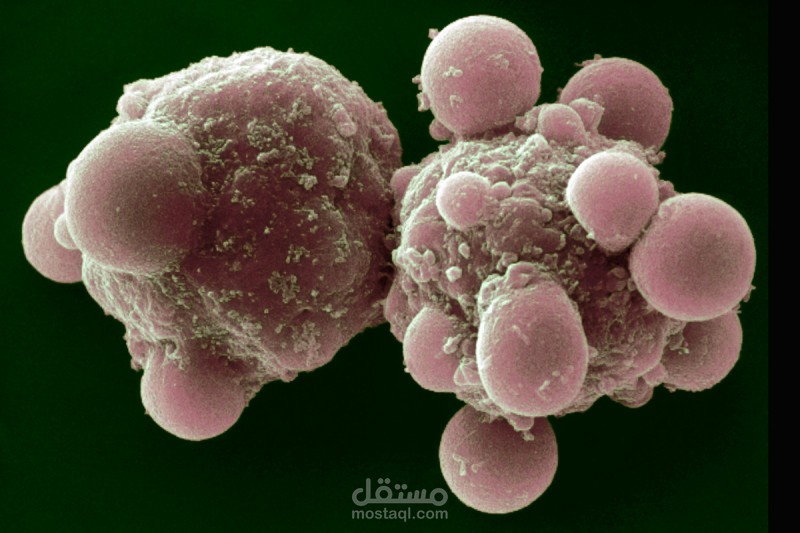cell death
تفاصيل العمل
Cell death is a natural process that occurs in all living organisms. It is important for the normal development and maintenance of tissues and organs, as well as for the removal of damaged, infected, or abnormal cells. There are two main types of cell death: apoptosis and necrosis.
Apoptosis, also known as programmed cell death, is a highly regulated process that occurs in response to specific signals and stimuli. It is a controlled and orderly process that allows cells to die without causing damage to surrounding tissues. During apoptosis, cells undergo a series of biochemical changes that lead to cell shrinkage, DNA fragmentation, and the formation of apoptotic bodies, which are then engulfed and cleared by neighboring cells or phagocytes.
Apoptosis is a crucial mechanism for maintaining tissue homeostasis and eliminating cells that are no longer needed or that have become damaged or infected. It plays a critical role in embryonic development, tissue remodeling, and the immune response. Dysregulation of apoptosis can lead to a range of diseases, including cancer, neurodegenerative disorders, and autoimmune diseases.
Necrosis, on the other hand, is a type of cell death that occurs in response to severe or irreversible damage or injury. It is an uncontrolled and chaotic process that can cause inflammation and tissue damage, as well as release of cellular contents that can be toxic to neighboring cells. Unlike apoptosis, necrosis is not a programmed process and can occur as a result of physical trauma, infection, ischemia, or exposure to toxins or radiation.
Necrosis is typically characterized by cell swelling, rupture of the cell membrane, and release of intracellular contents, which can trigger an inflammatory response and tissue damage. In some cases, necrosis can lead to the formation of a necrotic core, which can further exacerbate tissue damage and increase the risk of complications.
In addition to apoptosis and necrosis, there are several other types of cell death, including autophagy-mediated cell death, pyroptosis, and ferroptosis, each of which involves distinct molecular mechanisms and signaling pathways.
Understanding the mechanisms of cell death is critical for developing new therapies for a range of diseases. For example, many cancer therapies aim to induce apoptosis in cancer cells, while minimizing damage to normal cells. Similarly, treatments for neurodegenerative diseases such as Alzheimer's and Parkinson's disease aim to prevent or delay neuronal cell death.
Overall, cell death is a complex and dynamic process that plays a critical role in maintaining tissue homeostasis and responding to a range of physiological and pathological stimuli. Dysregulation of cell death can lead to a range of diseases and disorders, highlighting the importance of understanding the underlying mechanisms and developing new therapies to modulate cell death pathways.
